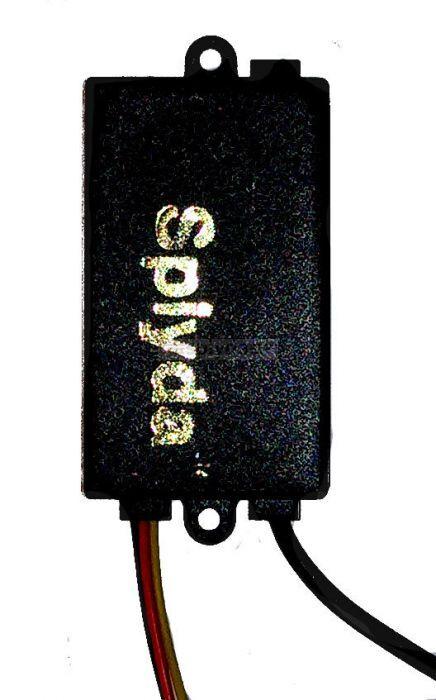Tachometer
The standard MGB rev counter will not work directly with the tachometer output signal from the ECU for 2 reasons :- the signal is too weak, and it’s pulsing for 6 cylinders and not 4. In order to make it work, we need to either replace the rev counter with one that will accept the ECU signal, or adapt the one we have. I like the original Smiths gauge so I chose the latter option.
The adapter box can be purchased quite cheaply from Spiyda. He sells two versions :- one for the RVI tacho which will fit inside the casing, and one for all other tacho (including RVC) which is an external unit. I have an RVC tacho so I chose the latter. The adapter will take a tacho output from more or less any source, including an ECU, for any number of cylinders, and drive more or less any tacho. It’s truly a universal translator for tachometer signals.
Fitting it is relatively straight forward. The Spiyda adapter needs to drive the tacho movement directly, so you basically need to dismantle the Smiths tacho and isolate the internal circuitry, then connect the movement directly to the pins on the back of the rev counter. You can then wire the Spiyda adapter to the rev counter pins and the ECU tacho output into the Spiyda adapter. I’m not going to explain exactly how to do this because Spiyda’s instructions are very comprehensive. There is, however, one thing you need to do inside the tacho that Spiyda doesn’t mention. When connecting the internal movement to the 2 pins, one of the wires (either) needs a 200 Ohm resistor wired in series. Both pins also need a 100 Ohm resistor wired across them. This is because the RVC rev counter is too sensitive. The resistors desensitise it slightly.
Once it’s all physically wired, you can calibrate it using Spiyda’s calibration audio tracks. The audio tracks are pure sine waves with a frequency matching that which you would get at certain RPM. This means when you play the audio track into the adapter, it will show the correct RPM on the tacho. You can then adjust the adapter via the trim pot to make the tacho read correctly. e.g. if you play the 200hz audio track, that should show 4000rpm for a 6 cylinder engine. I’d suggest trying several tracks and checking the linearity of the adapter. Note, my laptop worked fine playing the audio tracks, but my Android phone wouldn’t. You can also verify the rev counter by running OpCom software on your laptop & accessing the realtime diagnostics.

